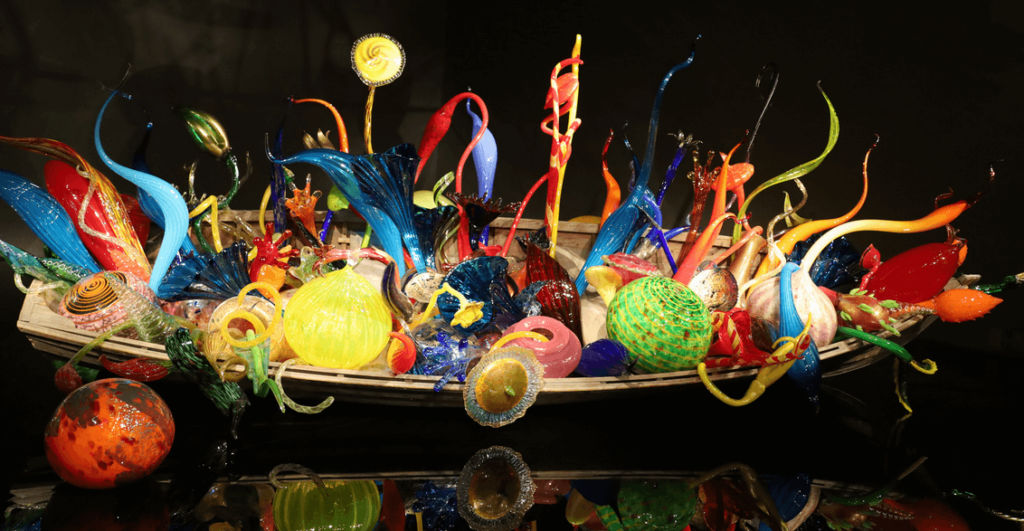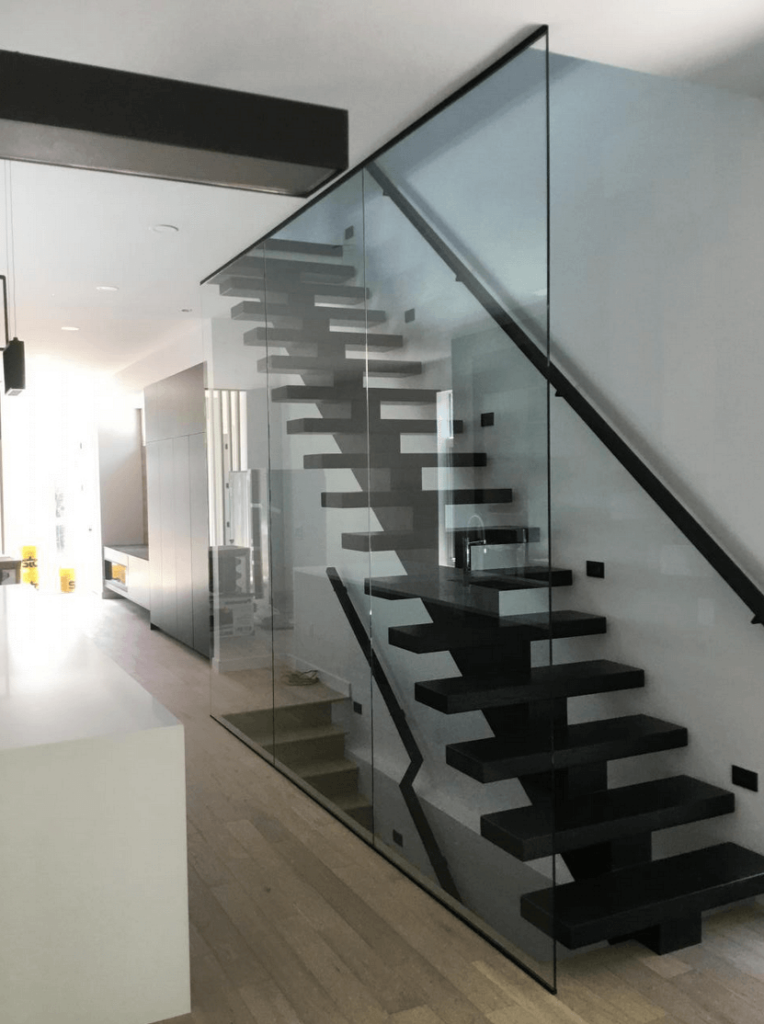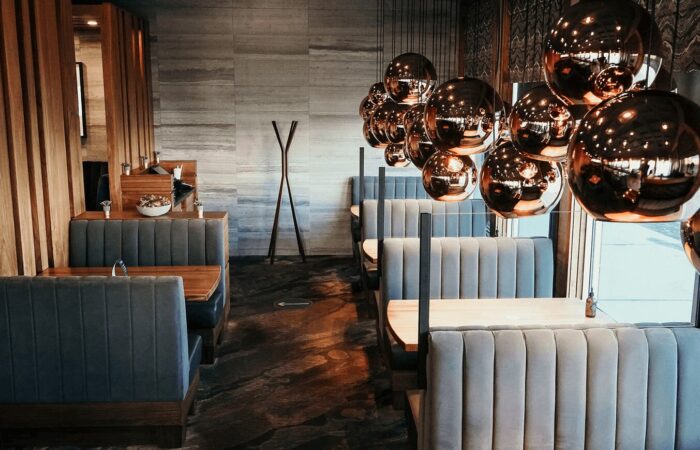Glass is a versatile material used in architecture and interior design for centuries. It offers an elegant and modern aesthetic, melding art and function uniquely. Today, designers and architects continue to push the envelope on what’s possible with this fascinating material. As we delve into the current trends in glass design for residential and commercial spaces, we’ll explore how it’s transforming our living and work environments into visually stunning, energy-efficient, and sustainable spaces.
The Evolution of Glass in Architecture
Historically, glass was primarily used in windows for its transparency, allowing natural light into spaces and providing views of the outdoors. However, with advancements in technology and manufacturing processes, the applications of glass in architecture have significantly expanded.
Today, glass is not just a component of windows or doors; it’s used in facades, walls, ceilings, staircases, and even floors. Architects and designers are increasingly innovatively utilizing glass to create aesthetically pleasing, energy-efficient, and sustainable buildings and interiors.
Historical Milestones in Glass Design and Architecture
Throughout history, innovations in glass manufacturing have proven pivotal in the architectural landscape. One such innovation was the introduction of plate glass in the 17th century. Developed in France, plate glass was created by casting a large slab of glass and then grinding and polishing it until it was flat. This technique allowed for larger and clearer glass panes, revolutionizing how buildings could be designed and how light could be utilized.
In the 20th century, glass was prominent in creating iconic buildings worldwide. The Institute du Monde Arabe in Paris, designed by Jean Nouvel, is a remarkable example. The south facade, composed of photo-sensitive glass, adjusts to changing light conditions, embodying a perfect blend of technology and design.
Another notable example is the Gherkin in London. Its spiralling glass design provides panoramic views of the city and enhances the building’s thermal performance, demonstrating how glass can be utilized for aesthetic and practical purposes.
These architectural achievements signify the transformational role of glass in shaping our built environments. Today, the use of glass in architecture continues to evolve, pushing boundaries in design, functionality, and sustainability.
Transparency and Openness
One of the most prevalent trends in residential and commercial design is the desire for open, airy spaces. This trend is driving the increased use of glass in various applications.
In residential design, homeowners opt for large windows, sliding doors and even entire glass walls to blur the lines between indoor and outdoor spaces. This allows maximum natural light into the home and creates a sense of spaciousness.
Glass partitions and walls foster an open and collaborative environment in commercial spaces. They provide visual connectivity while maintaining sound privacy. The transparency of glass helps create a sense of openness, enhancing productivity and creativity.
Energy Efficiency and Sustainability
As the world grapples with climate change, there’s a growing emphasis on creating energy-efficient and sustainable buildings. This trend extends to the use of glass.
Advancements in glass technology have led to the development of energy-efficient glass options, such as Low-E (low emissivity) glass and double-glazed windows. These types of glass help regulate indoor temperatures, reducing reliance on artificial heating and cooling systems thereby lowering energy consumption.
Similarly, photovoltaic glass, also known as solar glass, is gaining popularity in commercial buildings. This type of glass has embedded solar cells, allowing it to generate electricity while functioning as a window or facade.
Cost Savings and Long-Term Benefits of Energy-Efficient Glass Solutions
Incorporating energy-efficient glass in the design of residential and commercial spaces has many long-term benefits, primarily in cost savings and environmental impact. The initial investment in energy-efficient glass solutions like Low-E glass, double-glazed windows, and photovoltaic glass can be offset by substantial reductions in utility bills. These glass types help to maintain indoor thermal comfort, reducing the need for artificial heating and cooling. Consequently, they significantly lower energy costs in both summer and winter seasons.
Moreover, photovoltaic glass, in particular, offers a unique cost-saving advantage. By generating electricity, this solution not only slashes energy bills but, in some cases, can even contribute to the power grid, providing potential revenue.
Beyond cost savings, energy-efficient glass solutions also contribute significantly to sustainability goals. By minimizing energy consumption, they reduce the carbon footprint of buildings, aligning with global efforts towards reducing greenhouse gas emissions.
Energy-efficient glass solutions represent a sound investment. They offer tangible financial benefits, contribute to environmental sustainability, and enhance the aesthetic appeal of buildings, making them a popular choice for modern architecture and design.
Smart Glass Technology
Another exciting trend in glass design is the integration of smart technologies. Smart glass, also known as switchable glass, changes its transparency in response to light, heat, or electricity.
In residential settings, homeowners can use smart glass for windows, doors, or partitions, offering privacy at the touch of a button without needing curtains or blinds. In commercial buildings, smart glass can be used in conference rooms, office partitions, and facades, providing flexibility and enhancing energy efficiency.
The Science Behind Smart Glass Technology
Smart glass operates based on electrochromic principles, where materials change colour or opacity when an electrical charge is applied. Common types include Electrochromic, PDLC (Polymer Dispersed Liquid Crystal), SPD (Suspended Particle Devices), and Thermochromic glass.
Electrochromic glass has conductive and electrochromic layers between two glass panels. Applying voltage causes ions to move, changing opacity. This reversible process allows for various transparency levels.
PDLC glass contains liquid crystals in a polymer matrix. When off, the crystals scatter light, making the glass opaque. Switching on aligns the crystals, allowing light to pass and making the glass transparent.
SPD glass suspends microscopic particles in a thin film laminate. Without electricity, particles disperse randomly, blocking light and making the glass opaque. Applying electricity aligns the particles, allowing light to pass and making the glass transparent.
Thermochromic glass responds to heat, changing its molecular structure and opacity. It helps control solar heat gain, contributing to building energy efficiency.
Each type of smart glass offers unique advantages, chosen based on project needs. Regardless of type, smart glass represents a significant leap in architectural design, offering enhanced functionality, comfort, privacy, and energy efficiency.
The Art of Glass
Glass is not just functional; it’s also an artistic medium. Designers increasingly use coloured, textured, and patterned glass to add interest and character to spaces.
Once confined to churches and historical buildings, stained glass returns in residential and commercial designs. It adds colour and personality to spaces, creating stunning visual effects.
Textured glass, such as frosted or etched, offers privacy while letting light through. It’s often used in bathroom windows, shower doors, and partitions.
Patterned glass, with its intricate designs, is used as a decorative element in doors, windows, and interior partitions.
Contemporary Artists and Designers in Glass
Today, many contemporary artists and designers are making a significant impact with their innovative work with glass:
Dale Chihuly: an American sculptor known for his bold, vibrant glass installations. His work spans various scales, from individual glass sculptures to large-scale architectural installations and even multi-piece landscape projects. Chihuly’s work showcases the immense potential of glass as a medium for large-scale fine art.

Judith Schaechter: a pioneering artist in stained glass. She is celebrated for her intricate, layered works that combine traditional stained glass techniques with a distinctly contemporary sensibility. Schaechter’s pieces often depict complex narratives and emotional themes, demonstrating the medium’s potential.
Tokujin Yoshioka: a Japanese designer renowned for his experimental work with glass furniture and installations. His designs often play with the properties of light and glass to create stunning optical effects. Yoshioka’s work showcases the versatility of glass for contemporary design.
These artists and designers contribute to the evolution of glass in art and design, pushing the boundaries of what is possible with this versatile material. Their work underscores the enduring appeal of glass, showing it is a functional material and a medium for creative expression.
Inspiration for Your Next Glass Design Project
With its versatility and ability to transform spaces, glass offers infinite design possibilities. Here, we inspire residential and commercial projects incorporating glass.

Residential Ideas
In residential design, glass can bring in natural light, create open spaces, and add a unique aesthetic appeal. Consider these ideas:
- Glass Walls: Transform your living areas into light-filled sanctuaries with floor-to-ceiling glass walls. They offer an unobstructed view of the surroundings, blurring the boundaries between inside and outside.
- Skylights: Install skylights in darker rooms or corridors to bring in natural light and make the space appear larger.
- Glass Partitions: Use glass partitions to divide rooms without blocking light. Frosted or patterned glass could be used for added privacy.
Commercial Ideas
In commercial spaces, glass can enhance architectural design, improve energy efficiency, and create a modern atmosphere. Explore these ideas:
- Façade Glass: Style your building’s façade with energy-efficient glass for a modern, sleek look that reduces energy costs.
- Glass Partitions: Create flexible office spaces with smart glass partitions. They provide privacy when needed and promote an open environment otherwise.
Whether planning a residential or commercial project, these ideas can be a starting point for your next glass design project. Remember, the possibilities with glass are limitless and can be tailored to your specific needs and aesthetic preferences.
Maintaining Modern Glass Installations
Proper maintenance and care are essential for pristine modern glass installations. Here, we offer tips and tricks for cleaning and maintaining different glass surfaces, highlighting the longevity and durability of modern glass solutions when properly cared for.
Cleaning Tips
- Routine Cleaning: Regular cleaning prevents dust and dirt build-up. Use a soft, lint-free cloth and a glass cleaner to wipe down surfaces.
- Streak-Free Shine: To avoid streaks, clean glass on a cloudy day or in the shade, as sunlight can cause the cleaner to dry too quickly.
- Hard Water Stains: White vinegar can be a great solution for hard water stains. Spray a mixture of equal vinegar and water on the glass and wipe it down.
- Scratch Removal: Minor scratches can be buffed out using toothpaste or baking soda. Apply a small amount to a soft cloth and gently rub the scratch in a circular motion.
Maintenance Tips
- Regular Inspection: Regularly inspect glass installations for any chips, cracks, or scratches to avoid larger problems down the line.
- Professional Help: For major issues such as deep scratches or chips, it’s best to call in a professional to assess and repair the damage.
- Careful Handling: Avoid slamming doors or windows, which can damage the glass and the frame. Handle all glass installations gently.
The Durability of Modern Glass
When maintained properly, modern glass solutions offer impressive longevity. Glass strength and durability have significantly improved with the advent of technologies such as tempering and laminating, making it a reliable material for residential and commercial projects. Moreover, smart glass technologies can reduce wear and tear by controlling light and temperature, contributing even further to the lifespan of your installations. However, remember, regular and proper care is the key to maintaining their shine and durability in the long run.
Conclusion
Glass is swiftly becoming one of the most versatile materials in contemporary art, design, and architecture. From the breathtaking large-scale installations of Dale Chihuly to the innovative designs of Tokujin Yoshioka, artists and designers are pushing the boundaries of this exciting medium. Using glass can transform the spaces in our homes and workplaces, creating light-filled, open, and modern environments. With various design possibilities, energy efficiency, and durability benefits, glass combines functionality and aesthetic appeal. With proper care and maintenance, these installations can remain pristine and serve their purpose for a long time. The future of glass in design and architecture is shining bright, offering endless opportunities for creativity and innovation.
Are you ready to transform your space with beautiful and quality glass designs? Reach out to Red Seal Glass today and experience the best of Alberta’s locally sourced, custom glass solutions. We are an Edmonton-based glass & installation company, and we can’t wait to work with you!

